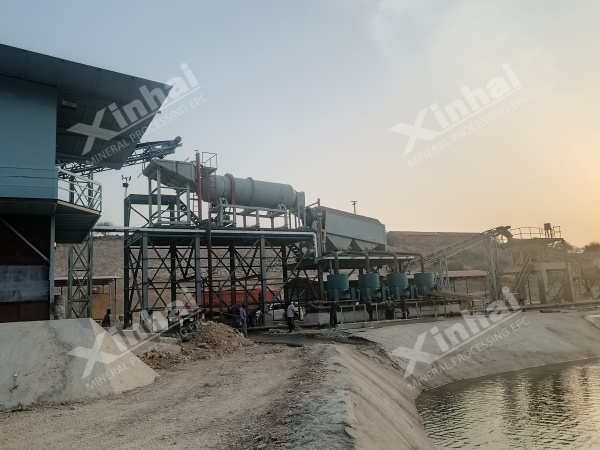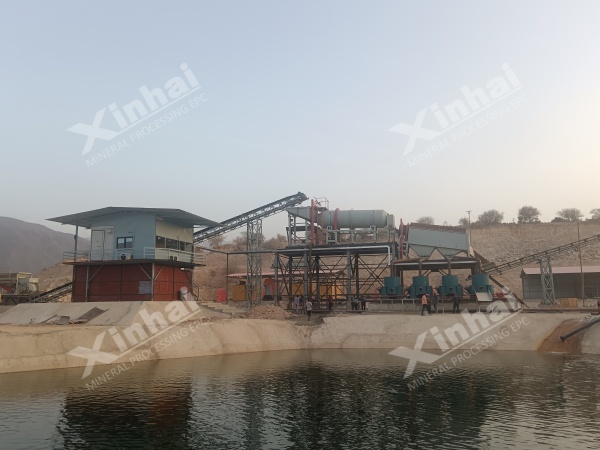If you want to know more information (such as product/process price, etc.), please contact us 24-hour telephone
Placer gold differs from conventional hard-rock gold. Hard-rock gold typically occurs within solid bedrock, making extraction more complex and capital-intensive. Placer gold, on the other hand, refers to deposits where native metallic gold exists as free particles in rivers, streams, lakes, or alluvial formations. These gold particles are usually eroded from upstream primary gold deposits and accumulate in low-lying areas due to water movement.
Because placer gold is near the surface, it is generally easier and more economical to mine. Xinhai Mining offers customers a comprehensive solution for placer gold mining and processing, featuring high technical expertise, rapid project delivery, and excellent gold recovery rates.

Before mining, exploration and evaluation are essential to determine the location, extent, depth, grade, and reserves of placer gold deposits.
Key tasks in this phase include:
Geological mapping
Topographic surveying
Drilling or trench sampling
Systematic sampling grid layout
Sample processing and laboratory analysis
Resource estimation and reserve calculation
To ensure a safe and efficient mining operation, mine site preparation must be carried out. This includes:
Clearing surface vegetation
Stripping the overburden
Constructing necessary infrastructure
Establishing drainage systems
• Hydraulic Mining
High-pressure water jets are used to dislodge ore sand, creating slurry that flows by gravity or is pumped to the processing plant via channels.
Best suited for hillside placer deposits with accessible water sources and appropriate slope conditions.
• Dredging Mining
A floating dredger, equipped with a front-end excavation system, extracts underwater or near-shore ore sand and conveys it to an onboard processing plant via washing or pumping.
Ideal for river, lake, or shallow underwater placer deposits.
• Open-Pit Mining
Mechanical equipment such as excavators, loaders, bulldozers, and trucks are employed to excavate and transport ore sand.
Applicable to large-scale placer deposits with thick overburden or limited water availability.
• Underground Mining
Rarely used in placer gold mining, underground mining is mainly applied to ancient buried riverbeds. Extraction is typically done via small shafts or tunnels.
Used only in special cases where placer deposits are deeply buried.

The core principle of placer gold processing is to utilize the significant difference in density between gold and gangue minerals to achieve separation in a flowing water medium.
Main Steps in Placer Gold Beneficiation
The ore is mixed with water and vigorously washed to break up clay lumps and agglomerates. A trommel screen or vibrating screen is then used for classification, and the screened material proceeds to the next stage.
This step focuses on the rapid recovery of medium to coarse gold particles. Common equipment includes jigs and spiral chutes.
The rough concentrate is further purified to obtain high-grade gold concentrate. The key equipment used includes shaking tables, centrifugal concentrators, and gold pans.
Roughing tailings are treated to recover any remaining gold. Spiral chutes, centrifugal concentrators, and other equipment are used for scavenging. The final tailings are sent to a thickener for sedimentation.
The clarified water is recycled, while solid particles are further dehydrated using dewatering screens or filter presses before being dry-stacked or reclaimed.
The gold concentrate is dewatered using thickeners and filters, then dried and smelted in a high-temperature furnace to produce gold ingots.
Xinhai Mining Design Institute employs over 80 experts across geology, mining, mineral processing, 3D modeling, civil engineering, and more.
When developing a mining plan, we conduct comprehensive comparisons of different mining methods, taking into account orebody characteristics, climate conditions, regulatory requirements, and customer budgets to develop the most suitable solution.
In the field, advanced systems such as GPS positioning, automated control systems, and efficient water recycling technologies are applied to create intelligent and efficient mining operations, significantly reducing the cost per ton of ore.
The beneficiation process is tailored based on ore characteristics and test results, optimizing the flow to achieve both high recovery rates and low operating costs.
Xinhai's self-developed spiral chute is a classic and efficient device for fine-grained gold recovery. For ultra-fine gold, a centrifugal concentrator is used to ensure maximum recovery efficiency.

In 2025, Xinhai successfully delivered a 200TPH placer gold processing project integrating gravity separation and mercury amalgamation. This project showcased our capabilities in the design and construction of large-scale placer gold plants.
Turnkey Solution: From process design and equipment manufacturing to installation and commissioning, Xinhai provided a complete non-pilot (ready-to-run) solution, significantly shortening the production cycle.
Cost Savings: Core equipment investment was reduced by 30% through process optimization.
High Recovery: The mercury amalgamation process boosted the gold recovery rate to 95%.
Eco-Friendly Design: The system was equipped with a closed-loop water recycling and mercury vapor recovery device, achieving both environmental and economic benefits.
Conclusion
With nearly 30 years of experience in placer gold mining and processing, Xinhai has delivered services to over 2,500 mines in more than 150 countries and regions around the world.
If you are looking for a reliable partner in placer gold mining and processing, feel free to contact us for tailored solutions.